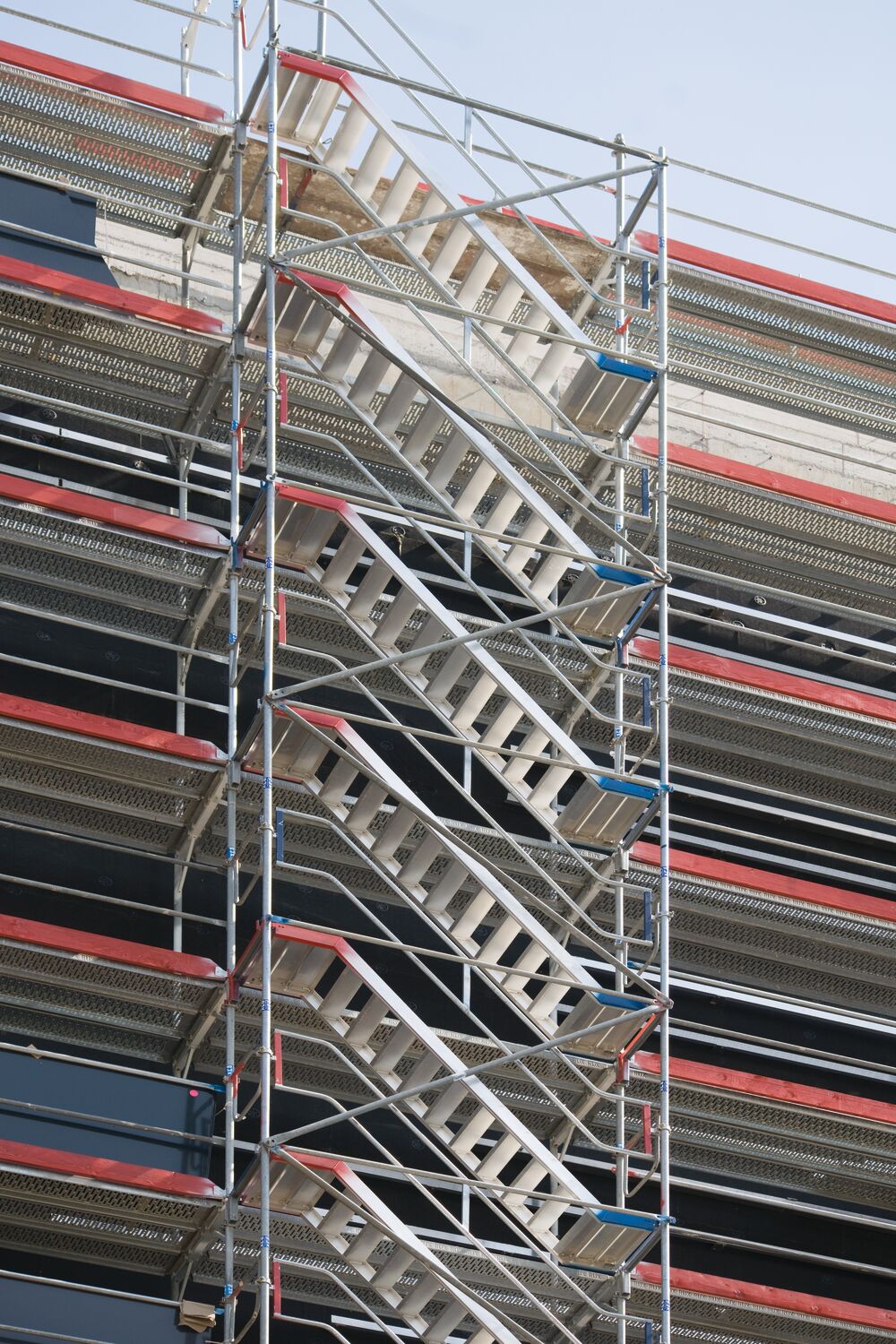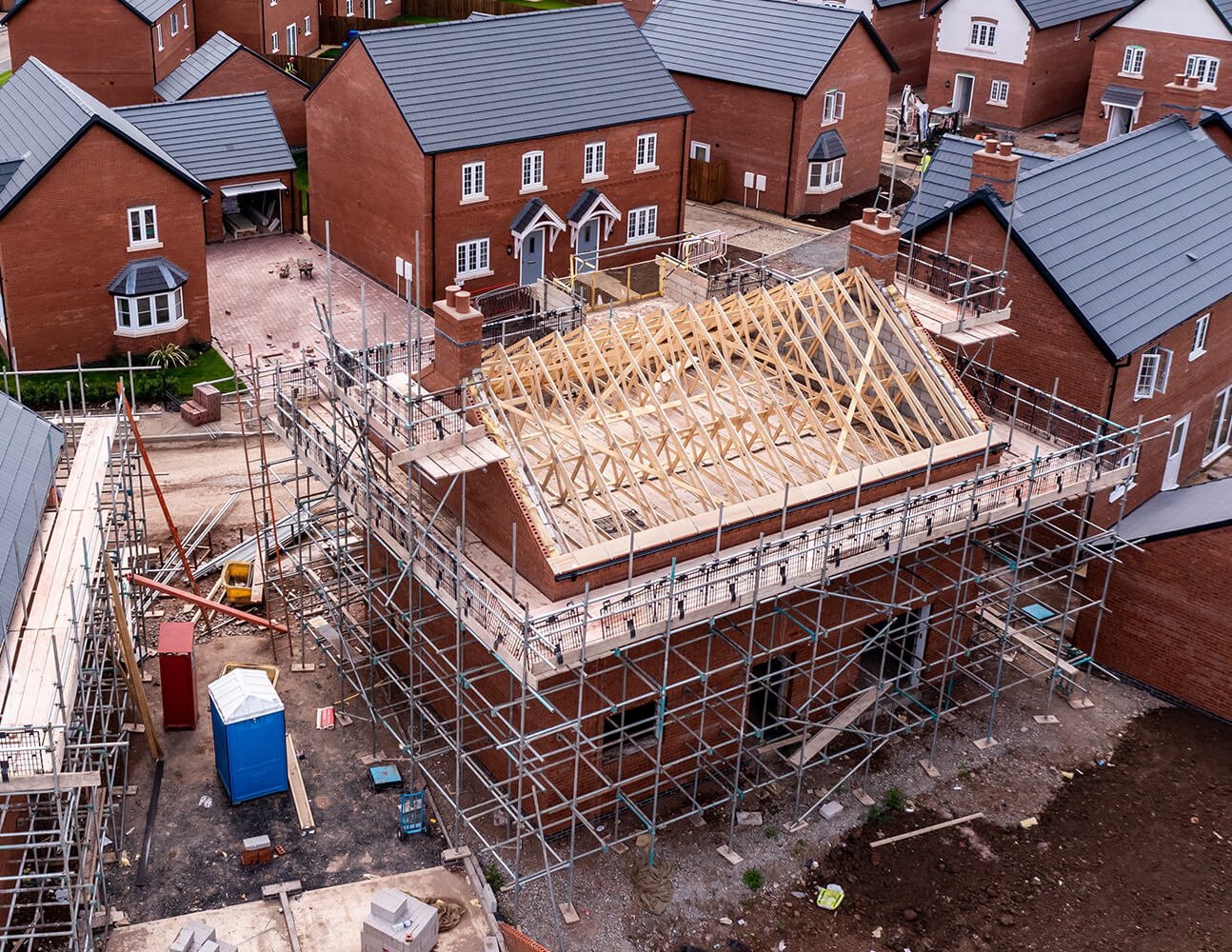A Comprehensive Overview to the Important Functions of Scaffolding in Modern Construction
The landscape of modern construction increasingly relies on efficient scaffolding systems that prioritize effectiveness, advancement, and safety. As jobs expand in intricacy, understanding the vital features of scaffolding becomes important for ensuring employee safety and enhancing job timelines.
Kinds of Scaffolding
Although scaffolding systems can differ commonly in design and application, they usually fall under several distinct groups that satisfy various building requirements - Scaffolding. The most typical kinds consist of sustained scaffolding, put on hold scaffolding, and rolling scaffolding
Supported scaffolding is composed of platforms sustained by a framework of posts, which offer a elevated and steady working surface. This type is generally made use of for tasks that need considerable elevation, such as bricklaying or outside painting.
Suspended scaffolding, conversely, is used for projects requiring access to high altitudes, such as cleansing or fixing structure exteriors. This system hangs from a roof or an additional framework, enabling workers to lower or increase the system as required.
Rolling scaffolding functions wheels that enable for simple flexibility throughout a work website. It is specifically valuable for tasks that require frequent moving, such as indoor job in huge rooms.
Each sort of scaffolding is created with certain applications in mind, making certain that construction projects can be executed efficiently and effectively. Understanding these groups is essential for selecting the ideal scaffolding system to fulfill both job needs and site problems.
Secret Security Attributes
Security is extremely important in scaffolding systems, as the possible threats associated with functioning at heights can result in major accidents otherwise effectively managed. Trick security features are important to make certain the wellness of workers and the stability of the building website.
Most importantly, guardrails are important. These barriers supply a physical safeguard versus falls, dramatically minimizing the risk of significant injuries. Furthermore, toe boards are often made use of to avoid tools and materials from dropping off the scaffold, protecting employees below.
One more essential component is using non-slip surfaces on systems. This function boosts grip, particularly in damaging weather, consequently minimizing the possibility of falls and slides. Access ladders need to be safely placed to promote safe entry and departure from the scaffold.
Regular evaluations and upkeep of scaffolding systems are additionally crucial. These examinations make certain that all elements remain in excellent problem and functioning properly, dealing with any type of wear or damages without delay.
Last but not least, proper training for all personnel associated with scaffolding operations is necessary to ensure that they comprehend security procedures and can determine prospective dangers. Scaffolding. Jointly, these attributes develop a more secure working setting and dramatically alleviate threats linked with scaffolding
Product Advancements
Developments in material scientific research have actually considerably influenced the scaffolding market, enhancing both safety and performance in contemporary construction. The intro of high-strength steel and aluminum alloys has actually transformed traditional scaffolding systems.
Furthermore, innovative composite products, such as fiberglass-reinforced plastics, have arised as feasible choices. These materials are immune to rust and environmental deterioration, thus prolonging the life-span of scaffolding systems, especially in harsh weather condition conditions. The usage of such products adds to decrease maintenance expenses and ensures constant performance over time.


Design Factors To Consider
Taking into consideration the complexities of modern-day construction tasks, effective scaffolding layout is extremely important to guaranteeing both capability and safety. Layout considerations should encompass various elements, including tons capacity, height, and the details requirements of the building and construction site. Each task presents special challenges, requiring an adaptable approach to scaffolding systems that can adapt to differing conditions.
Structural stability is crucial; as a result, designers have to calculate the tons that the scaffolding will certainly sustain, consisting of workers, materials, and devices. The option of products plays an essential duty in guaranteeing the scaffolding can stand up to these lots while continuing to be durable and lightweight. Additionally, the design should permit easy gain access to and egress, assisting in the smooth activity of employees and products.
Security functions, such as guardrails and non-slip surface areas, must be included to minimize dangers of mishaps. The layout needs to consider the surrounding atmosphere, including adjacent frameworks and possible hazards. By resolving these layout factors to consider, building and construction companies can enhance the effectiveness of scaffolding systems and advertise a much safer working atmosphere, eventually contributing to the total success of the job.
Maintenance and Inspections
The performance of scaffolding systems expands past initial layout and application; ongoing maintenance and normal assessments are important to guaranteeing their continued performance and safety throughout the period of a project. Normal evaluations should be carried out by qualified workers to identify any type of signs of wear, damages, or instability that can jeopardize the honesty of the scaffolding.
Maintenance methods ought to consist of regular checks of structural parts, such as fittings, slabs, and structures, making sure that all elements stay cost-free and safe and secure from rust or various other deterioration. Furthermore, the capability of safety features, such as guardrails and toe boards, have to be analyzed to guarantee compliance with safety and security guidelines.
Documents of all evaluations and maintenance tasks is important for responsibility and regulative conformity. A systematic method to record-keeping not just help in tracking the problem of the scaffolding yet also offers needed proof in the occasion of an incident.
Eventually, developing a thorough upkeep content and inspection schedule will substantially lower the threat of crashes and boost the total safety and security of the building website. By focusing on these methods, building and construction supervisors can safeguard workers and copyright the project's integrity.

Final Thought
Finally, the essential functions of scaffolding in contemporary building incorporate a variety of crucial components, including diverse kinds, crucial safety devices, material technologies, and thoughtful design considerations. Stressing safety via guardrails and non-slip surfaces, together with innovations in products like high-strength steel, enhances both performance and sustainability. Routine upkeep and inspections are important for making sure architectural integrity and security on construction sites, eventually assisting in reliable task execution and promoting the wellness of employees.
The landscape of modern-day building and construction increasingly relies on effective scaffolding systems that prioritize development, safety, and efficiency.Innovations in product scientific research have actually dramatically affected the scaffolding market, boosting both safety and security and performance in modern-day building. Generally, these material developments not only improve the performance and safety of scaffolding systems yet likewise line up with the market's push towards sustainability, as many modern-day products are developed to be much more ecologically friendly.
Taking into consideration the intricacies of contemporary construction tasks, reliable scaffolding style is critical to ensuring both capability and security.In conclusion, the important features of scaffolding scaffold drawing in modern-day building incorporate a variety of crucial components, including varied kinds, essential safety devices, material advancements, and thoughtful style factors to consider.
Comments on “Residential Scaffolding Solutions for Safe and Efficient Home Improvements”